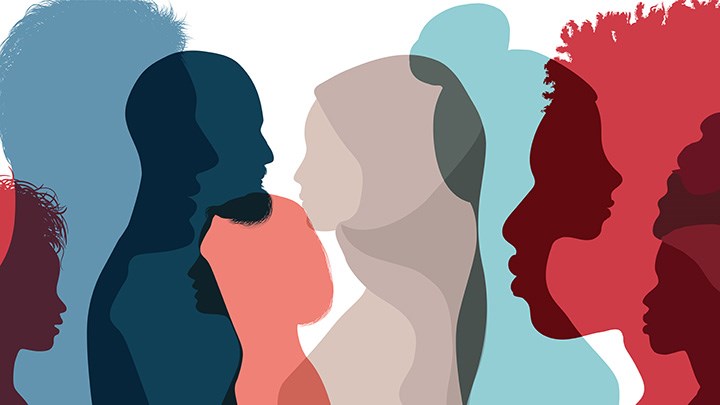Gender mainstreaming in higher education

The aim of this page and the information gathered here is to provide a basic understanding of one of the university's official mandates, gender mainstreaming, and how it affects our activities. It explains basic concepts related to sex, gender, gender equality and equal opportunities. There is also information and materials on how you can develop your teaching, in terms of both format and content, from different gender and gender equality perspectives.
Key concepts
Gender equality means that women and men should have the same power to shape society and their own lives.
Equality, on the other hand, is a broader concept. It refers to equal and fair relations between all individuals and groups in society and that all people have equal value and rights in society.
Equal opportunity is the right to coexist in justice and on equal terms regardless of gender, gender identity or gender expression, ethnicity, religion or other beliefs, disability, sexual orientation or age. These are also the seven grounds of discrimination in the Discrimination Act.
Sex is used to describe the bodily sex while gender is used to describe the socially constructed gender that is created and shaped through expectations, norms and cultural interpretations. However, the distinction between sex and gender is not easily made because bodies (sex) must also be understood through cultural expectations and norms. These are interpreted differently in different cultures and eras.
Norm critical pedagogy (“normkritik”) is a concept that describes a way of understanding and critically examining norms in everyday life. It is not about "criticizing" norms; they are important to navigate in the social world. However, norm critical pedagogy aims to make visible expectations and values that are not always so easy for us to detect.
Intersectionality is the "intersection" between our different identities based on, in addition to gender, sexuality, ethnicity, religion, functionality, age, etc. This means that we do not have one identity at a time but that we orient ourselves between different identities and power structures throughout life.
Gender equality or gender?
The strategy used by Swedish authorities, including Swedish higher education institutions, to achieve the Government's gender equality policy goals is called gender mainstreaming. For Swedish universities and other higher education institutions, the goals are to
- combat gender-based study choices
- develop the form and content of teaching
- promote equal career paths
- promote equal distribution of resources
- developing evaluation and follow-up.
Gender mainstreaming involves the integration of a gender perspective and a gender equality perspective to strive towards gender equality. You therefore need to have an understanding of what a gender perspective and gender equality perspective mean for education at Swedish higher education institutions.
A gender equality perspective highlights the gender distribution and power balances in an organisation or other context. In education, this can involve promoting broader recruitment, broader participation and broader student completion. Unlike “increased” recruitment, participation and student completion, it is not just a matter of increasing the total number of students, but rather that the number of women and men who are recruited to, participate in and complete study programmes should be as evenly distributed as possible. At Örebro University, we also work to broaden recruitment, broaden participation and broaden student completion based on social background, ethnicity, functionality and age.
Having a gender perspective in study programmes is more about the content and implementation of a course. Integrating a gender perspective into your courses can mean allowing students to explore how course content – such as course literature, case studies or examination tasks – takes gender into account or highlights the living situations of women, men and non-binary people. The content can – but does not have to – be about gender equality.
Mainstreaming means that a gender and gender equality perspective must be an integral part of the activities, from planning, decision-making and implementation to follow-up.
The Centre for Academic Development is the university's pedagogical support unit and can help you integrate different gender and gender equality perspectives in the form and content of your courses.
Getting started with gender mainstreaming
We have provided some suggestions on how to go about integrating gender equality into your programme. You can find both information and support materials on the How to integrate perspectives in your programme page.


